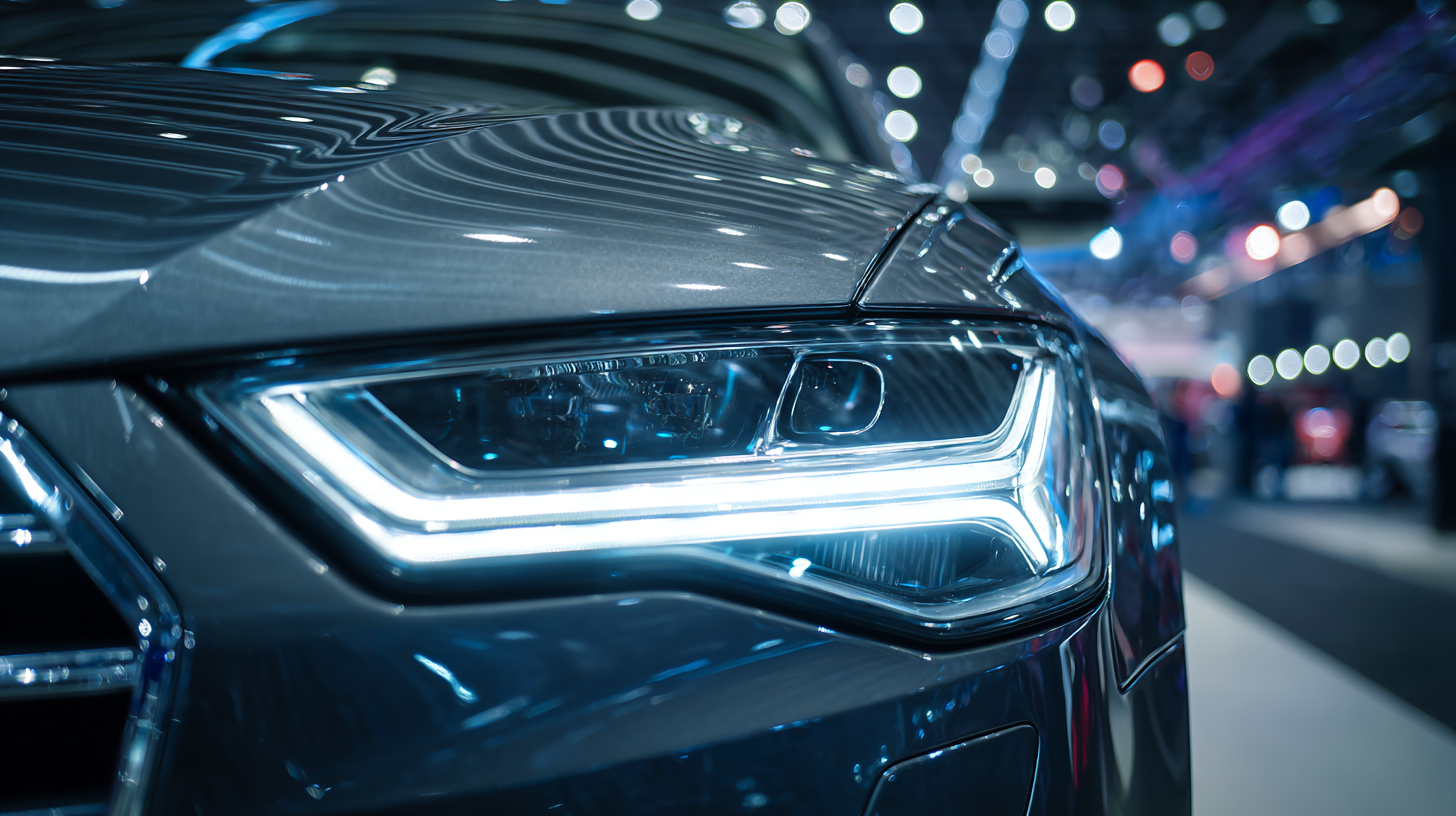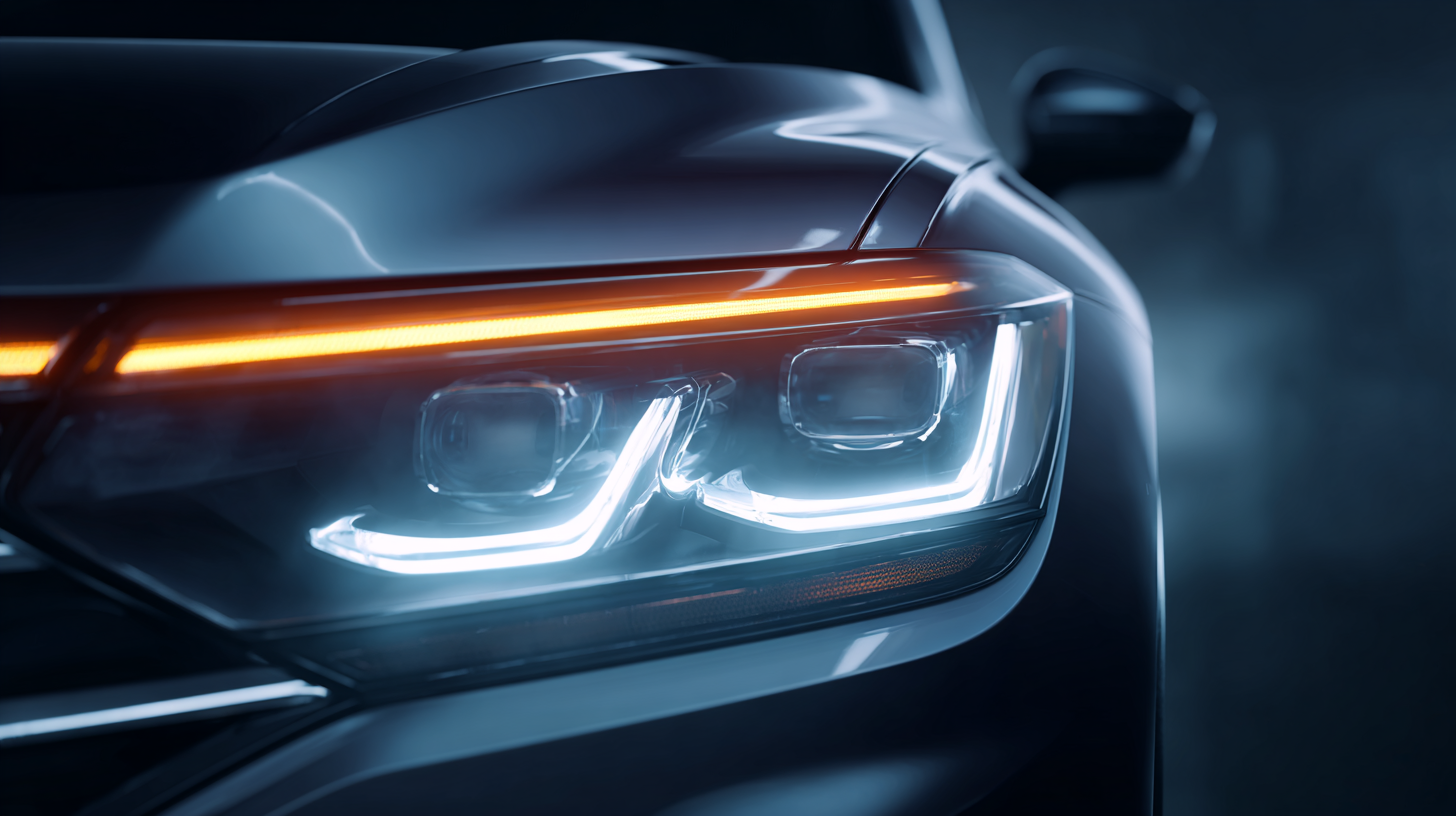The automotive lighting industry is on the cusp of a revolutionary transformation, driven by advancements in technology and shifting consumer preferences. As vehicles become increasingly equipped with smart features and connectivity, automotive lighting innovations are emerging as critical components that enhance both functionality and aesthetics. From adaptive headlamps that adjust to driving conditions to LED technology that improves energy efficiency, the future of automotive lighting promises to redefine the driving experience.

In this exploration of trends shaping the automotive lighting landscape, we will delve into the latest innovations that are making their mark on vehicle design and safety. The integration of intelligent lighting systems is not just about visibility; it also plays a significant role in communication between vehicles and pedestrians, offering enhanced safety measures. As we look ahead, the role of automotive lighting will continue to evolve, incorporating more personalized options that cater to individual preferences while adhering to regulatory standards.
Ultimately, the convergence of design, technology, and sustainability in automotive lighting signifies a pivotal shift in the automotive industry. By understanding these trends, stakeholders can better prepare for the changes ahead, ensuring that they remain at the forefront of this dynamic sector. As we embark on this exploration, it's clear that the future of automotive lighting is bright, illuminating not just our roads but also the path toward innovation.
The automotive lighting industry is undergoing a significant transformation, with a marked shift from traditional halogen bulbs to advanced LED technology. This transition is largely driven by the benefits that LEDs offer, including superior energy efficiency, longer lifespan, and enhanced brightness. Market research indicates that the penetration of LED lighting in the automotive sector is rapidly increasing, with a projected growth rate that suggests they will dominate new vehicle sales in the coming years.
Statistically, as of 2022, LED technology accounted for more than 60% of the global automotive lighting market, reflecting a steady increase from just 20% five years prior. This trend is expected to continue as manufacturers prioritize sustainability and consumers demand higher-performance lighting solutions. Additionally, advancements in LED design and manufacturing processes are paving the way for even more innovative lighting features, such as adaptive lighting systems and personalized lighting environments, which further enhance driving safety and aesthetics.
The automotive lighting industry is undergoing remarkable transformations driven by emerging technologies, particularly in the realm of smart lighting systems. As consumer demand for energy-efficient and adaptive solutions rises, manufacturers are investing heavily in innovative lighting technologies. These smart systems are capable of adjusting brightness, direction, and color based on real-time driving conditions, enhancing visibility and safety on the road. The integration of sensors and connectivity within vehicles is paving the way for a more responsive lighting experience, catering to both drivers' needs and environmental considerations.
Moreover, the shift towards electric vehicles (EVs) is further propelling advancements in automotive lighting. The significant growth projected in the global automotive lighting market underscores the industry's transition towards LED technologies, which are noted for their longevity and energy efficiency. Events like the Guangzhou International Lighting Exhibition spotlight cutting-edge innovations in the field, showcasing manufacturers' commitment to evolving automotive lighting solutions. As these smart lighting systems gain prominence, they not only elevate safety standards but also contribute to a more sustainable automotive future.

The evolution of adaptive headlights is set to significantly enhance road safety for next-generation electric vehicles (EVs). By leveraging real-time data, these intelligent lighting systems can adjust their brightness and direction based on driving conditions, optimizing visibility and reducing glare for oncoming traffic. According to industry reports, the global automotive lighting market is anticipated to reach USD 58.8 billion by 2033, primarily driven by advancements in LED technology coupled with the increasing adoption of electric vehicles. This growth underscores the importance of integrating innovative lighting solutions that not only improve aesthetic appeal but also prioritize safety functionality.
Recent developments include collaborations between technology companies and automotive manufacturers, focusing on intelligent headlamp systems capable of adapting to dynamic driving environments. For instance, machine learning models that predict traffic density and vehicle arrival times at intersections are being explored, paving the way for smarter adaptive lighting that further enhances the safety and efficiency of urban mobility. As these technologies continue to evolve, the integration of advanced lighting solutions will play a crucial role in shaping the future of automotive safety and driving experience.
| Aspect | Description | Impact on Safety | Real-Time Data Use |
|---|---|---|---|
| Adaptive Beam Patterns | Headlights adjust their beam to illuminate corners better. | Improves visibility around curves, reducing accidents. | Uses data from cameras and sensors detecting road curvature. |
| Dynamic Light Control | Lights adjust intensity based on surrounding traffic. | Reduces glare for oncoming drivers, increasing safety. | Real-time data about vehicle positions and speed. |
| Weather Adaptation | Lights adapt based on weather conditions (fog, rain). | Maintains visibility during adverse weather, decreasing risk. | Incorporates data from environmental sensors. |
| Pedestrian Detection Lighting | Headlights activate specific patterns when pedestrians are detected. | Increases awareness and caution towards pedestrians, enhancing safety. | Utilizes data from forward-facing cameras and sensors. |
| Emergency Response Lighting | Adjusts light patterns to signal emergencies to other drivers. | Increases driver awareness of emergencies, potentially saving lives. | Incorporates data from emergency vehicle signals and positions. |
The automotive lighting industry is experiencing significant innovations driven in part by regulatory changes aimed at enhancing safety and sustainability. As governments around the world tighten regulations to reduce air pollution and improve vehicle efficiency, manufacturers are compelled to adopt advanced lighting technologies. These changes not only enhance visibility and safety for drivers and pedestrians but also allow for the integration of energy-efficient solutions such as LEDs and adaptive lighting systems. Such innovations are crucial as regulatory bodies increasingly emphasize reducing carbon emissions and improving environmental outcomes in road transportation.
Additionally, the impact of these regulatory shifts on automotive lighting extends to leveraging smart technologies, such as automated control systems that adapt lighting based on driving conditions. This technological evolution responds to the broader trends in the automotive industry, where flexibility and innovation are paramount. As automakers strive to meet these regulatory demands, the interplay between compliance and technological advancement will likely define the future landscape of automotive lighting, leading to more intelligent, sustainable, and safer vehicles on the road.

The automotive lighting industry is undergoing a significant transformation, particularly with a focus on sustainability. As manufacturers become increasingly aware of their environmental impact, the rise of eco-friendly materials in vehicle lighting has become a crucial trend. Innovations such as biodegradable plastics and recycled materials are now being implemented in the production of headlights and taillights, reducing waste and promoting a circular economy. This shift not only helps the environment but also appeals to the growing consumer demand for greener vehicles.
Tips for automotive designers: Consider sourcing materials from suppliers who prioritize sustainability in their processes. Look into options like bio-based resins or LED technology, which are known for their energy efficiency and longer lifespan. Incorporating these eco-friendly materials not only enhances the vehicle's appeal but also demonstrates a commitment to environmental responsibility.
Manufacturing processes are also evolving, with many companies adopting energy-efficient practices and reducing emissions in their production lines. By investing in renewable energy sources like solar and wind power, automotive lighting manufacturers can significantly lower their carbon footprint. This proactive approach not only aligns with global sustainability goals but also positions companies as leaders in a rapidly changing market.
Tips for manufacturers: Regularly assess your production methods to identify areas for improvement in energy usage. Implementing automation and advanced technologies can streamline operations and decrease waste, contributing to both economic and environmental benefits.





